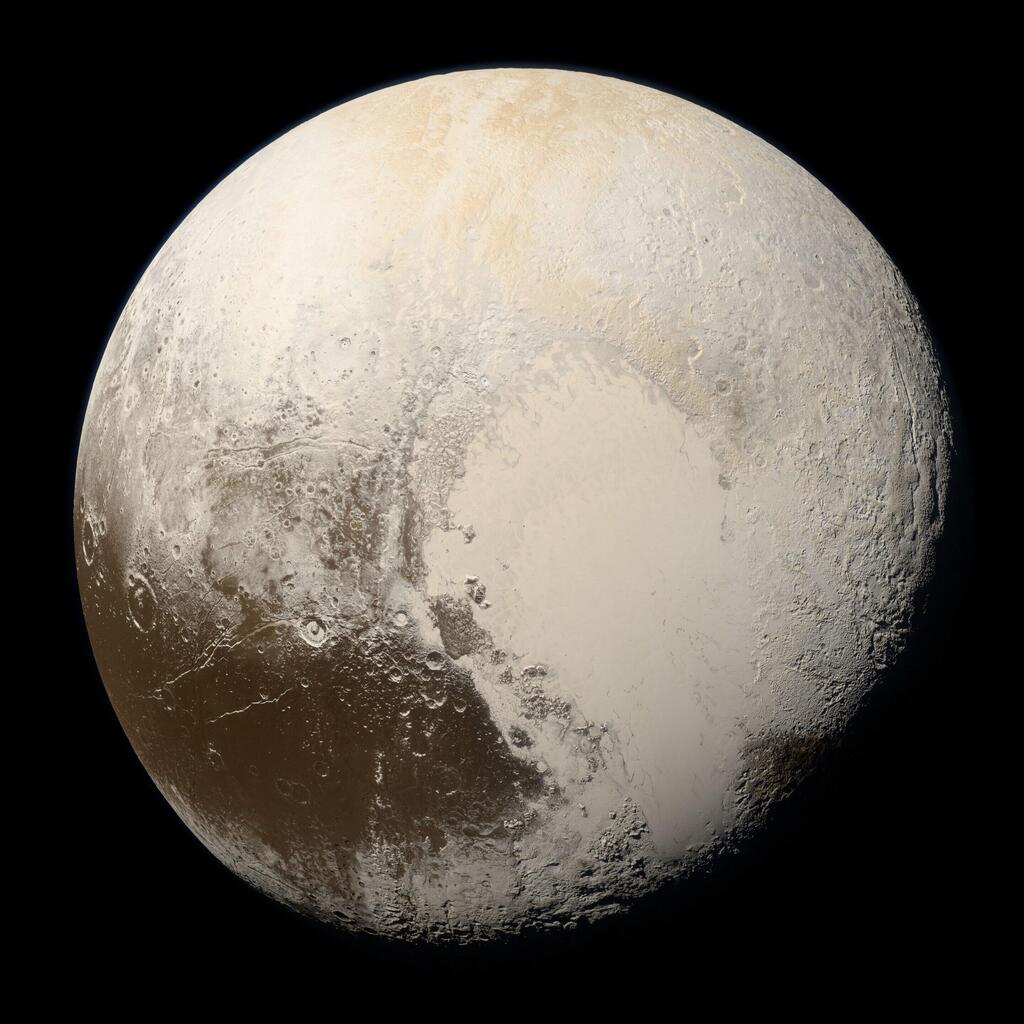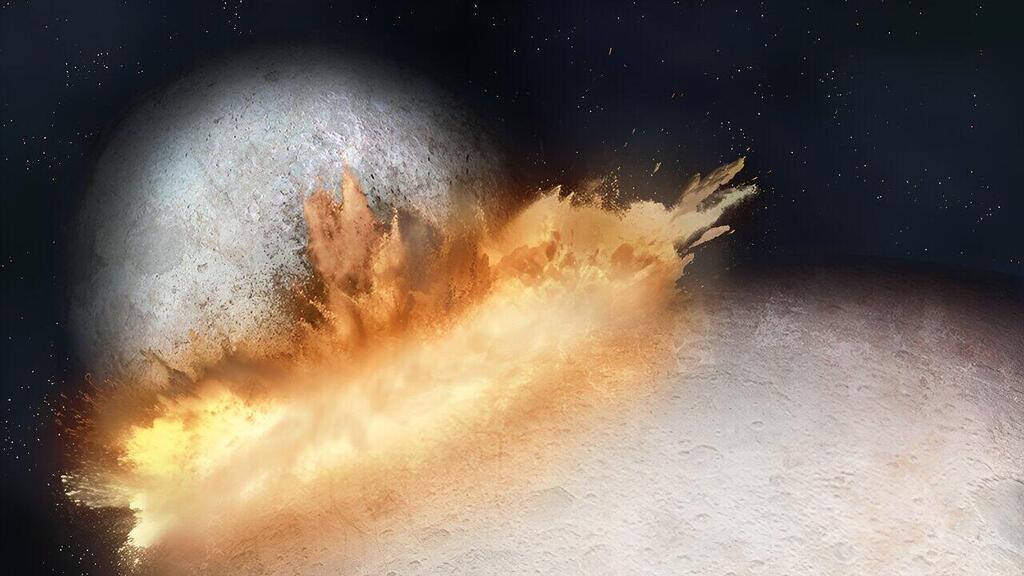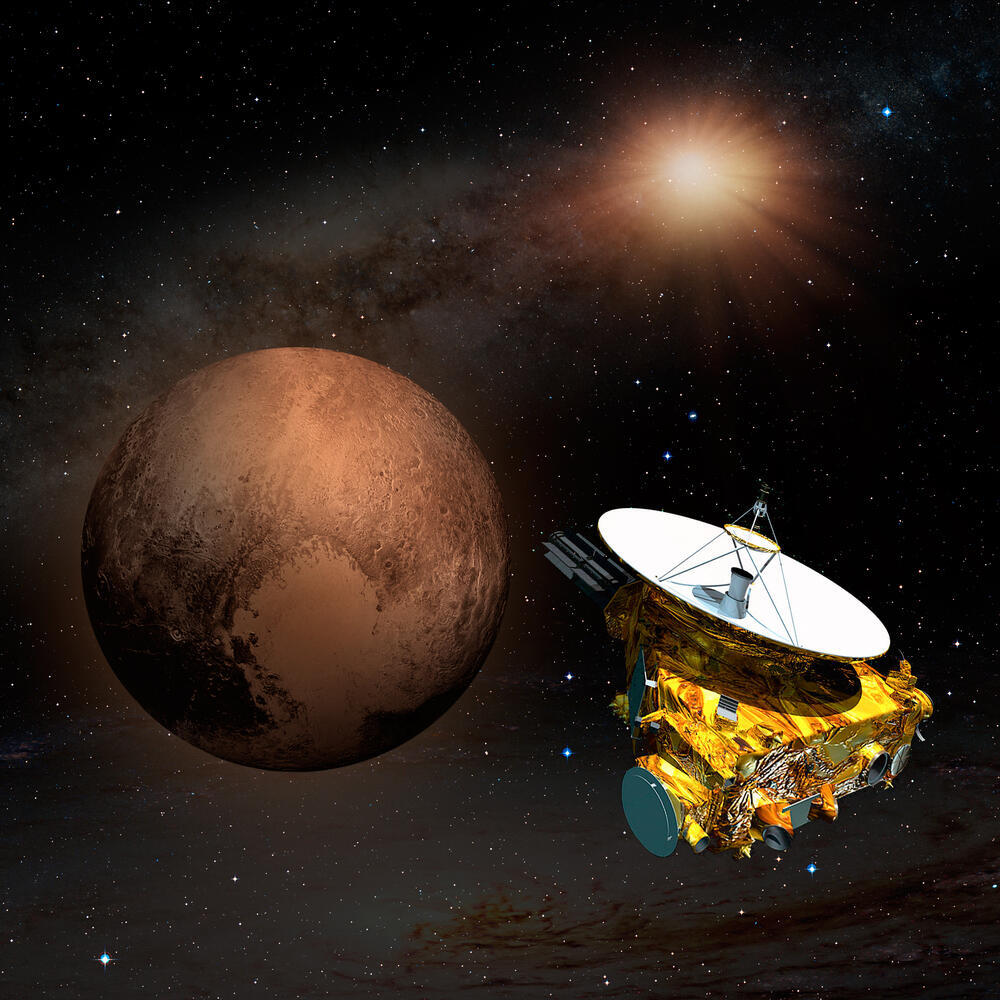The enigmatic heart-shaped structure adorning the surface of Pluto, first revealed by NASA's New Horizons mission in 2015, has captivated and perplexed scientists. Its peculiar shape, unique geological composition and unusual elevation have sparked numerous questions about its origin.
Recently, a collaborative effort between researchers from the University of Bern, including members of the NCCR PlanetS and the University of Arizona, has shed light on the formation of Sputnik Planitia, the western lobe of Pluto's heart. Through intricate numerical simulations, they propose a dramatic beginning for this distinctive feature: a colossal collision with a celestial body roughly twice the size of Switzerland.
3 View gallery


The planet Pluto, with a heart-shaped area
(Photo: NASA/Johns Hopkins University Applied Physics Laboratory/Southwest Research Institute/Alex Parker)
This cataclysmic event, occurring in Pluto's early history, not only shaped Sputnik Planitia but also offers insights into the dwarf planet's internal structure. The findings, published in Nature Astronomy, challenge previous assumptions and suggest the absence of a subsurface ocean within Pluto.
A closer look at Pluto's 'heart'
The unveiling of Pluto's "heart," officially named Tombaugh Regio, by the New Horizons mission in 2015, instantly captivated both the public and the scientific community. Its striking appearance, characterized by a high-albedo material that reflects light more intensely than its surroundings, creating a distinct white coloration, immediately drew attention.
However, the "heart" is not a homogenous entity. Sputnik Planitia, the western lobe, sprawls across an area comparable to a quarter of Europe or the United States, spanning 1,200 by 2,000 kilometers. Intriguingly, this region sits three to four kilometers lower than most of the rest of Pluto's surface.
"The bright appearance of Sputnik Planitia is due to it being predominantly filled with white nitrogen ice that moves and convects to constantly smooth out the surface," explains Dr. Harry Ballantyne, lead author of the study from the University of Bern. "This nitrogen most likely accumulated quickly after the impact due to the lower altitude."
3 View gallery


A visualization of the impact on the planet Pluto, which ultimately created the heart-like shape
(Photo: Thibaut Roger, University of Bern)
The eastern part of the heart, while also covered with a similar nitrogen ice layer, exhibits a much thinner coating. Its origin remains shrouded in mystery, though scientists suspect a connection to Sputnik Planitia.
Recreating a cosmic collision
The distinctive elongated shape of Sputnik Planitia hints at a celestial ballet far more intricate than a simple head-on collision. "The elongated shape of Sputnik Planitia strongly suggests that the impact was not a direct head-on collision but rather an oblique one," notes Dr. Martin Jutzi of the University of Bern, who spearheaded the study.
Driven by this observation, the team, along with other research groups worldwide, embarked on a digital reconstruction of the event. Utilizing Smoothed Particle Hydrodynamics (SPH) simulation software, they meticulously recreated various impact scenarios, tweaking parameters such as the composition of both Pluto and the impacting body, as well as the velocity and angle of the impact.
These simulations corroborated the scientists' suspicions regarding the oblique angle of impact and shed light on the composition of the impacting body. "Pluto's core is so cold that the rocks remained very hard and did not melt despite the heat of the impact, and thanks to the angle of impact and the low velocity, the core of the impactor did not sink into Pluto's core, but remained intact as a splat on it," explains Harry Ballantyne.
Co-author Erik Asphaug from the University of Arizona adds: "Somewhere beneath Sputnik is the remnant core of another massive body, that Pluto never quite digested."
This robust core and the relatively low impact velocity proved crucial for the success of the simulations. A weaker core would have resulted in a symmetrical surface feature, vastly different from the teardrop shape observed by New Horizons.
"We are used to thinking of planetary collisions as incredibly intense events where you can ignore the details except for things like energy, momentum and density," says Erik Asphaug. "But in the distant Solar System, velocities are so much slower, and solid ice is strong, so you have to be much more precise in your calculations. That's where the fun starts."
Building upon a long history of collaboration, the two teams have been exploring the concept of planetary "splats" since 2011, using it to explain features such as those found on the far side of the Moon. Following their investigations of the Moon and Pluto, the University of Bern team now sets its sights on similar scenarios for other outer Solar System bodies, including the Pluto-like dwarf planet Haumea.
Rethinking Pluto's internal structure
The enigmatic location of Sputnik Planitia, nestled near Pluto's equator, has long puzzled scientists. A giant impact crater, like the one theorized to have formed Sputnik Planitia, should gradually migrate toward the poles due to its mass deficit. The prevailing explanation for its equatorial position involved the presence of a subsurface ocean, causing a bulge in the icy crust and a mass surplus that would drive the migration toward the equator.
However, the recent study proposes a groundbreaking alternative. "In our simulations, all of Pluto's primordial mantle is excavated by the impact, and as the impactor's core material splats onto Pluto's core, it creates a local mass excess that can explain the migration toward the equator without a subsurface ocean, or at most a very thin one," Jutzi explains.
This innovative perspective challenges previous assumptions about Pluto's internal structure. The simulations suggest that a colossal impact, most likely occurring early in Pluto's history, could account for both the formation of Sputnik Planitia and its unusual location.
Dr. Adeene Denton from the University of Arizona, a co-author of the study, is currently investigating the speed of this migration. "This novel and inventive origin for Pluto's heart-shaped feature may lead to a better understanding of Pluto's origin," she concludes. The study not only offers a fresh interpretation of Sputnik Planitia's enigmatic location but also opens doors to a deeper understanding of Pluto's formation and evolution.
First published: 16:54, 04.17.24


